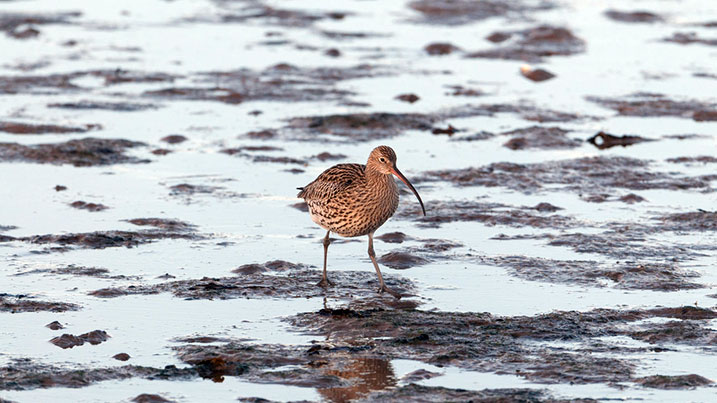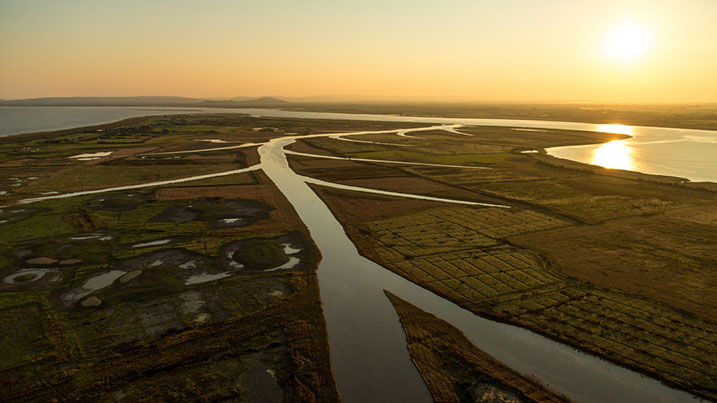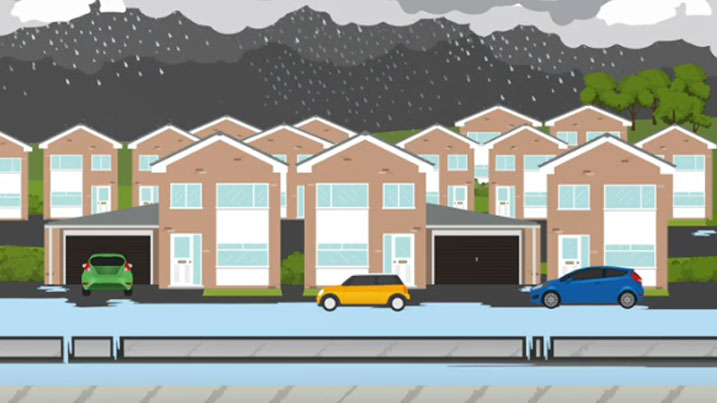Wetlands are commonly found in flat and low-lying areas, making them prime candidates for drainage and clearance. The reason? To make way for urban, industrial and agricultural development.
In the UK and in other urbanised countries, significant amounts of wetlands have already disappeared. This affects people, wildlife and the environment. Worldwide, some of our largest and most important wetlands are being eaten away at by development. Some large scale development projects are converting entire wetlands to other uses.
Destroying natural habitats
In all the work we do to save endangered species at WWT, habitat loss remains one of the main reasons wildlife are disappearing, from the curlew in the UK to the sarus cranes of Cambodia. Whether their habitats are destroyed for the development of homes, industry or agriculture the outcome is all the same.

Why building on our wetlands isn’t the answer
Over time we are learning that wetlands can actually be bad places to build on. We’ve discovered at our cost the perils of building on floodplains or too close to river banks. Flooding in the UK is now a major problem, causing significant destruction each winter. In 2015 storm Desmond affected more than 6,000 homes causing more than £500m in damages. 90 per cent of floodplains have been so affected by development that they no longer function properly. (From a study by the University of Salford and Coop insurance)
Wetlands: our natural defences
A floodplain works as a natural sponge, absorbing excess water. It also creates buffers that hold back water in some places and allow water to be redistributed in others. As natural floodplains are altered, either by man-made features such as houses or roads, or through alterations to the landscape due to intensive farming they lose their ability to absorb water. This means the water flows too fast into populated areas which leads to flooding, the devastation of property and loss of life.

Farming on wetlands
Many of the changes to our wetlands have come about through intensive farming. Modern farming practices have removed hedgerows and created huge fields in which the same crops are grown. These smooth, uniform landscapes significantly increase the risk of flooding and affect habitats and wildlife. Typically in these landscapes woodland has been removed, natural grasses diminished and farmland ponds filled or left to become overgrown and stagnant.
Building on wetlands
Despite the obvious risks, the UK government continues to allow the building of new homes on wetlands. The housing crisis means that this is unlikely to change anytime soon.
However, where sites are considered suitable and the development necessary, there is a plenty we can do at the design and management stage to minimise the impact on the existing wetlands and the functions they provide. Wetlands can also be constructed to restore and recreate the functions that a natural landscape would have provided before it was developed.
Wetlands in built-up areas benefit both wildlife and people. They provide natural habitats, helping to make sometimes inhospitable landscapes more attractive to wildlife. If well designed and managed, small wetlands can also help to reduce urban flooding and improve water quality, provide recreational opportunities, as well as save water, energy and often money.

What WWT are doing
WWT works around the world to tackle the issue of how wetlands can be maintained and restored in our rapidly urbanising environments. WWT is supporting farmers, policy makers and developers to undo some of the damage that has been done to our wetlands. By doing this work we are also restoring habitats which directly benefits our wildlife.
Worldwide, we are supporting communities to ensure their wetlands and the wildlife that relies on them are managed sustainably as economic growth and modern development practices threaten to undermine this rich natural resource.
By creating urban wetlands in the heart of local communities we can put back into the surrounding environment some of what development has taken from it.
With our work at Steart Marshes we are demonstrating first-hand how effective wetlands can be as a flood defence and why it is so important to preserve this valuable resource.
In Cambodia large areas of wetland are being destroyed to support its fast-growing economy. In just 15 years, half its wetlands have disappeared.
-
In this section
- Unsustainable Development
- Pollution and wetlands
- Invasive species and wetlands
- Climate change and wetlands